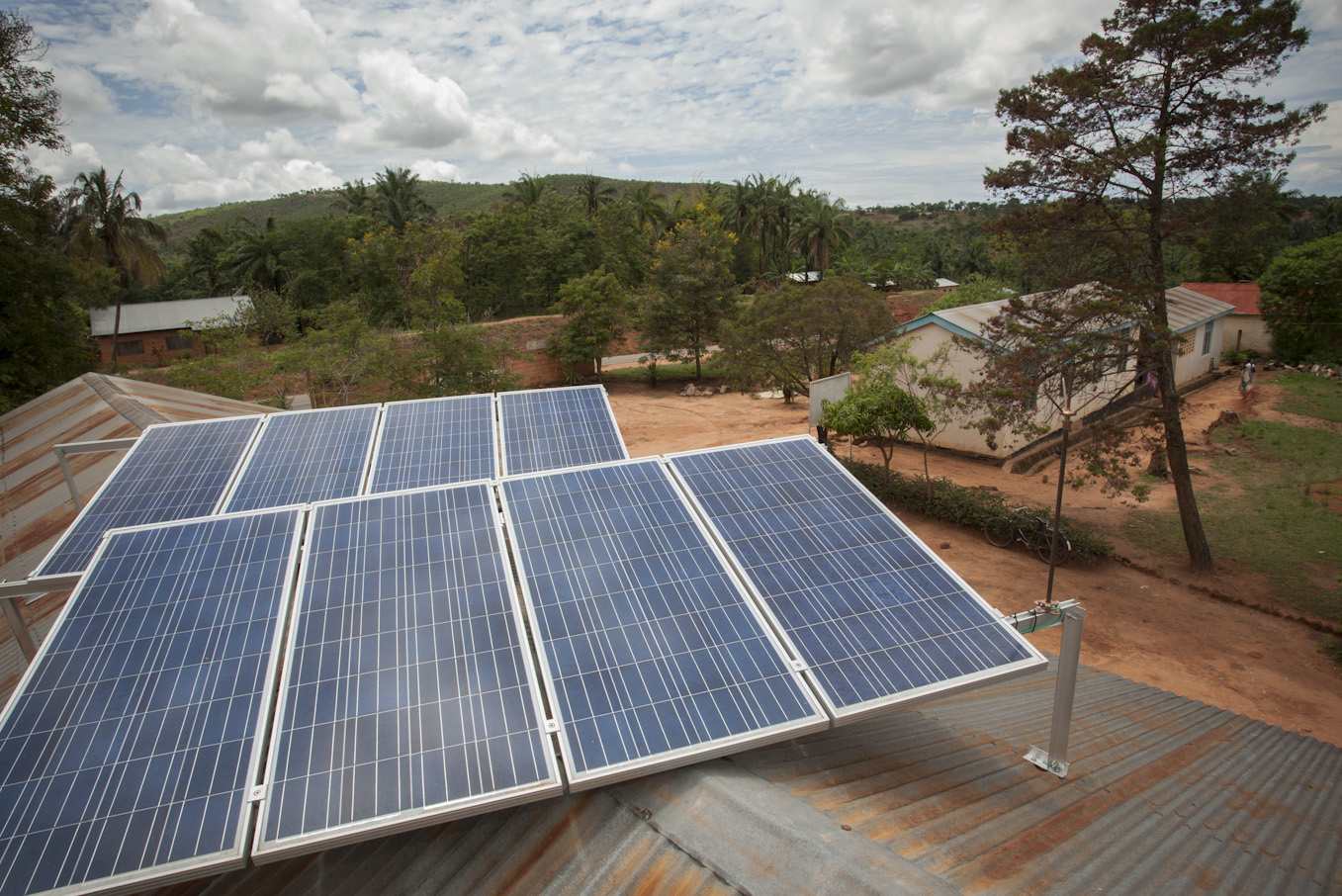Program Overview
The MCC $694.5 million Tanzania Compact (2008-2013) funded the $199.5 million Energy Sector Project, which included the $11 million Kigoma Solar Activity to provide photovoltaic systems to address energy needs where energy infrastructure and access to grid electricity was limited. The compact originally did not include the Kigoma Solar Activity; the activity was developed to replace the Malagarasi Hydropower and Kigoma Distribution Activity, which was canceled due to environmental risks. The Kigoma Solar Activity aimed to increase the use of solar-powered electricity, thereby reducing non-solar electricity consumption, which includes the use of kerosene and diesel.Key Findings
Implementation
- Implementation generally occurred according to plan. Most of the beneficiary groups targeted received the photovoltaic (PV) systems funded by the compact.
- None of the respondents recalled receiving the program’s marketing communications.
Quality of PV Systems
- PV systems face quality issues. A lack of maintenance and repair training may limit their utility and acceptance.
Use of PV Systems and Other Sources of Energy
- Initial take-up of solar energy was quite high.
- Use of kerosene was lower among targeted respondents than non-targeted respondents, indicating the intended switch from dirty fuels to solar occurred.
- The program was not associated with any clear changes in the way businesses and community institutions operated.
Sustainability
- All targeted health centers and dispensaries and 80 percent of targeted schools were still using their PV systems two years after installation. However, a lack of access to local service providers hinders sustainability.
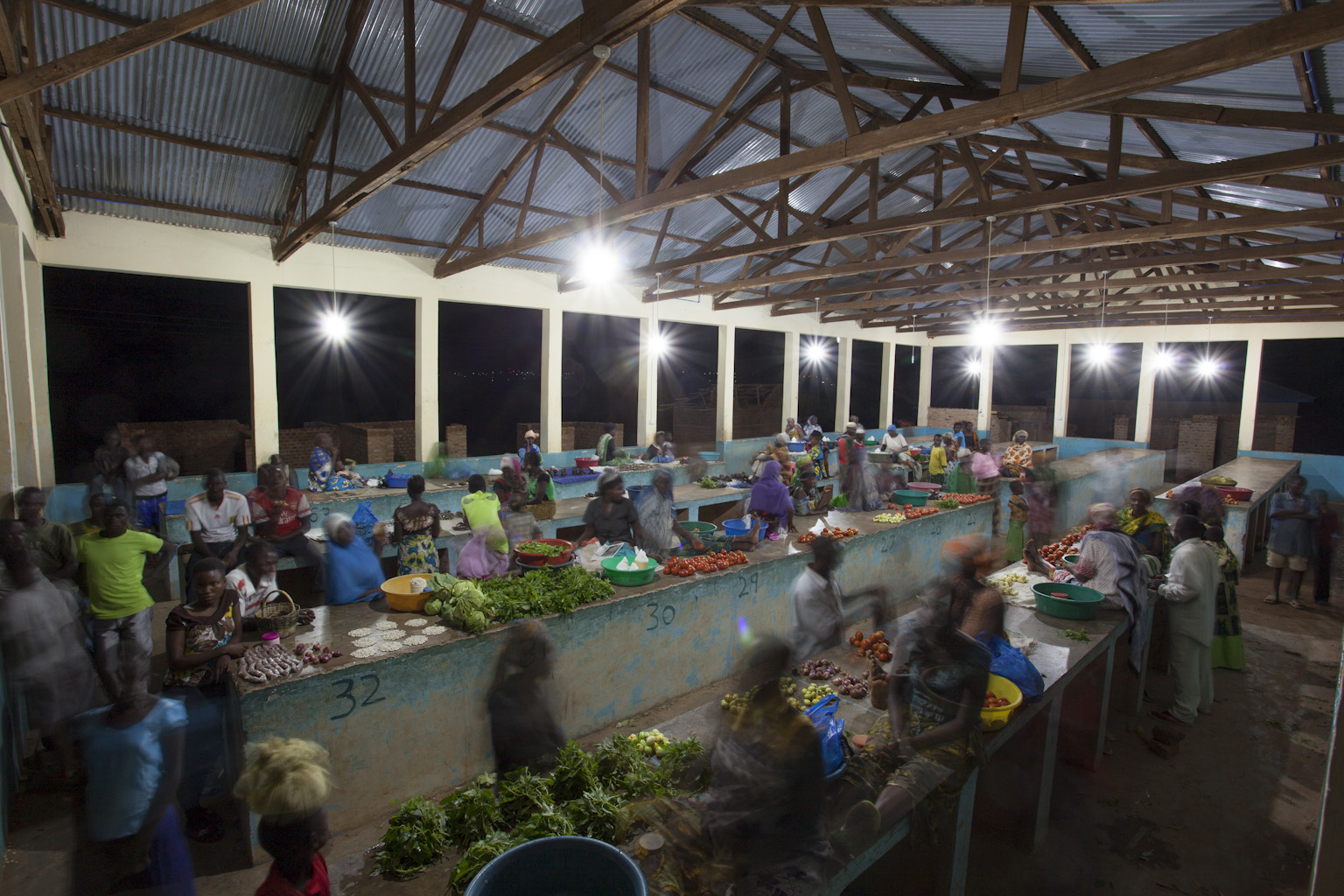
Use of electricity in fresh market.
Evaluation Questions
This final performance evaluation was designed to answer the following questions:- 1 How was the Kigoma Solar Activity implemented? Did implementation go according to the project design?
- 2 How do electricity use, economic activity, and human capital accumulation differ at follow-up and change over time for the targeted group selected to receive the activity versus the non-targeted group?
Detailed Findings
Implementation
Most of the beneficiary groups targeted received the PV systems funded by the compact. Schools, health facilities (dispensaries and health centers), and businesses in village markets generally received access to solar PV systems according to plan, and individual households and businesses purchased systems through Savings and Credit Cooperative Organizations (SACCO). The Kigoma Solar Activity included a household solar energy demonstration program as well as direct investments in electricity facilities for certain unconnected customers in the region. However, despite PV systems having been marketed to fishermen, none of those surveyed reported having had access to PV systems. In addition , survey respondents did not recall receiving the SMS messages that were designed to disseminate information about the activity to large audiences.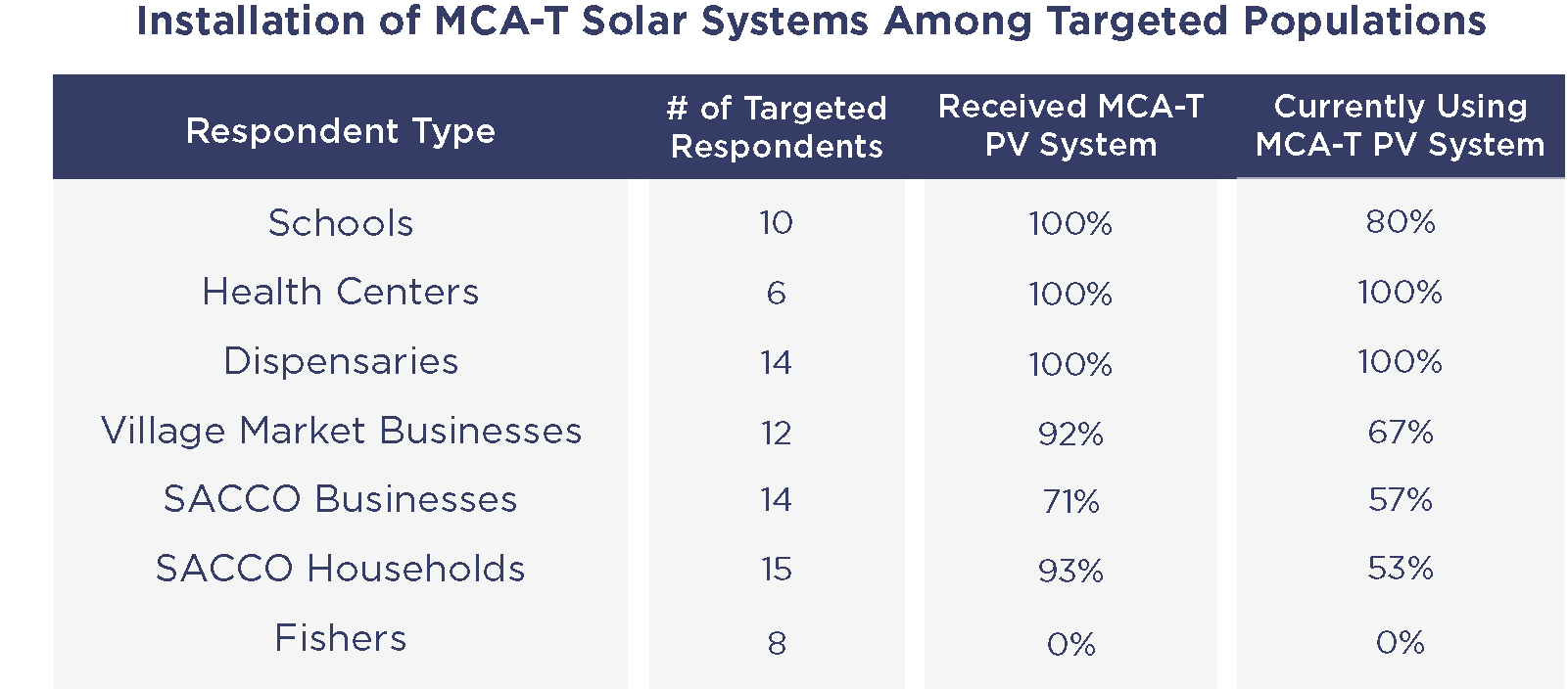
Quality of PV Systems
Although compact-funded systems seemed to perform better than other solar systems, users of all solar systems experienced problems fairly frequently. The most commonly reported challenges were cleaning the system (reported by 46 percent of participants), insufficient battery capacity (29 percent), and problems with socket extensions (21 percent). Only a small proportion (22.1 percent) of targeted respondents received the maintenance and repair training that was designed to be a component of the Kigoma Solar Activity.Use of PV Systems and Other Sources of Energy
While hours of solar electricity use increased dramatically over time for the targeted group (from an average of 98 hours per month to 399.5 hours per month in the target group between baseline in 2012 and follow-up in 2015 and from 55 hours per month to 174 hours per month in the non-targeted group), it appears that most of this occurred by the time the interim survey was completed, shortly after the systems were installed. Due to the limited exposure period, larger changes in electricity usage could not be adequately measured. In contrast, though, solar use increased more slowly for the non-targeted group than the targeted group between baseline and interim, while the reverse was true between the interim and endline surveys. This suggests that targeted respondents began using their solar systems shortly after receiving them, and that non-targeted respondents may have chosen to obtain solar systems through other sources in the period between the interim and follow-up data collection periods.
Chart showing solar use PV compared to Kerosene Use in last month.
Sustainability
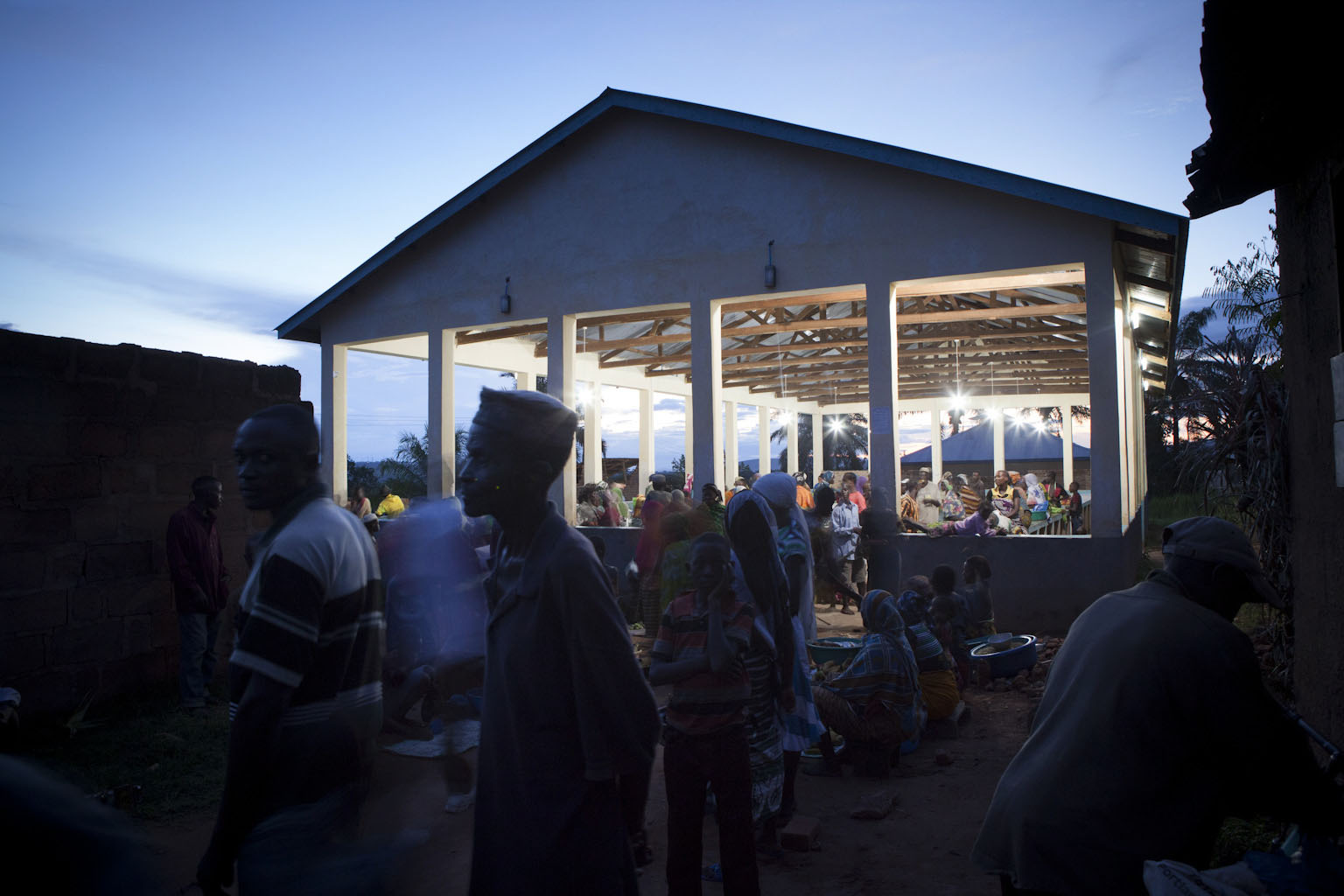
Outdoor facility with electricity.
MCC Learning
- Outreach and marketing efforts are critical in promoting widespread uptake and appropriately targeting the intended beneficiaries.
- Identifying and organizing the user/owner groups early is important for continued systems operations after deployment.
- MCC should ensure access to resources for repair and maintenance when planning and executing commercial systems and programs to improve sustainability.
- MCC should consult the broader literature and other donors before determining the exposure period in order to effectively measure larger changes resulting from interventions.
- Clearly documenting program design and implementation is critical to creating and executing a comprehensive and useful evaluation.
Evaluation Methods
Mathematica’s performance evaluation of the Kigoma Solar Activity used two rounds of data collection to conduct a pre-post comparison of targeted and non-targeted respondents in several implementation domains: 1) implementation processes and experience with the program, (2) installation of compact-funded solar systems, and (3) service quality of solar systems.The first round of data collection in 2013 was conducted by an independent consultant, contracted by MCA-Tanzania, the implementing entity. This round of data collection, which included 122 individual-level respondents and 19 group-level respondents, could not serve as a true baseline because it was collected after most PV installations had been completed and is thus referred to as “interim” data collection. The interim round of data collection did include retrospective questions about conditions in 2012, prior to PV installation.
Mathematica contracted Economic Development Initiatives (EDI) to conduct the second and final round of data collection in September 2015 with an exposure period of 24 months. EDI interviewed 114 of the original 122 individual-level respondents at that time.
Because of the small sample sizes and the purposive sampling of the non-targeted group, the estimated effects described in the report cannot be attributed with certainty to the Kigoma Solar Activity but are helpful for assessing potential impacts of the provision of solar PV systems to various types of users.
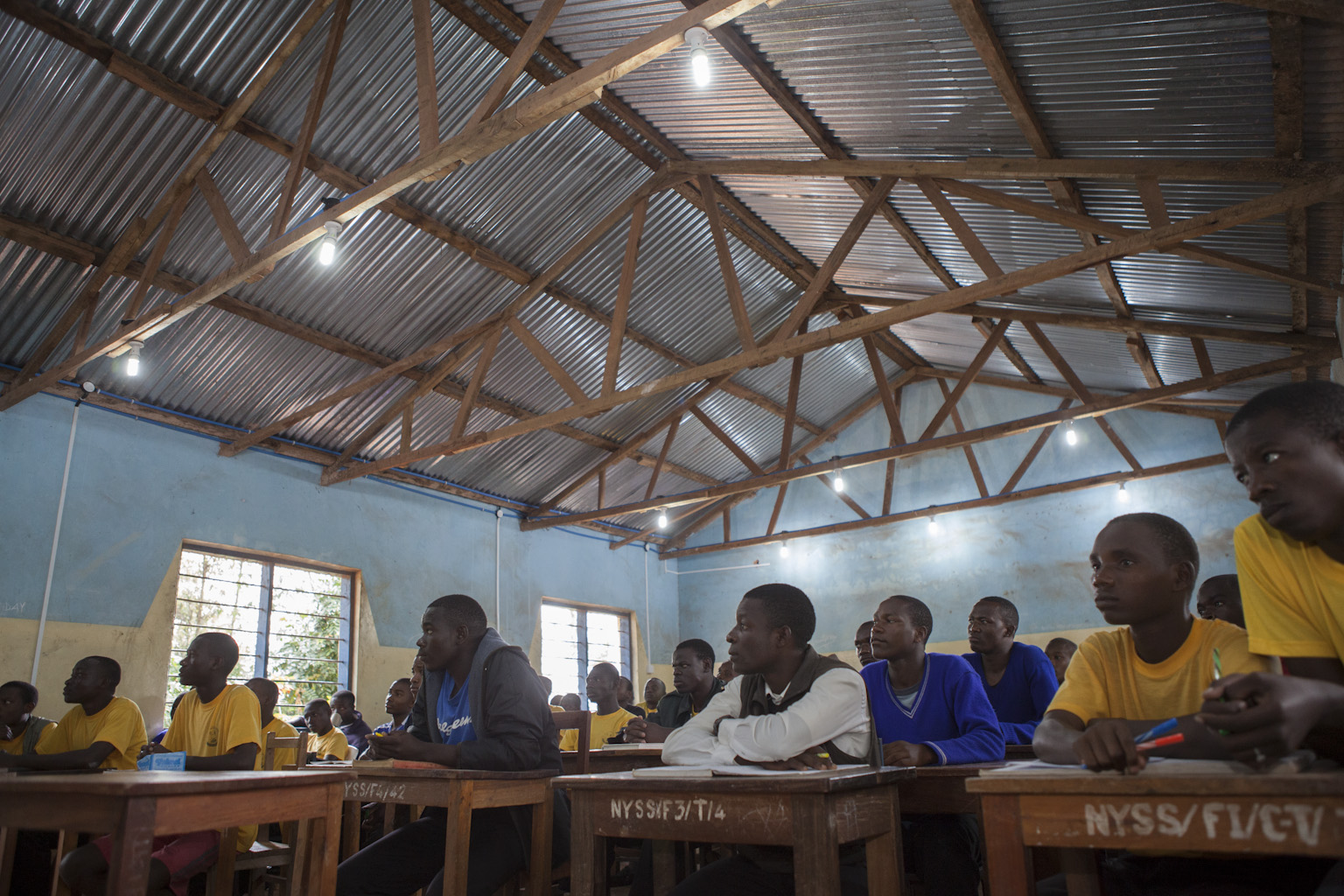
Classroom with electricity.
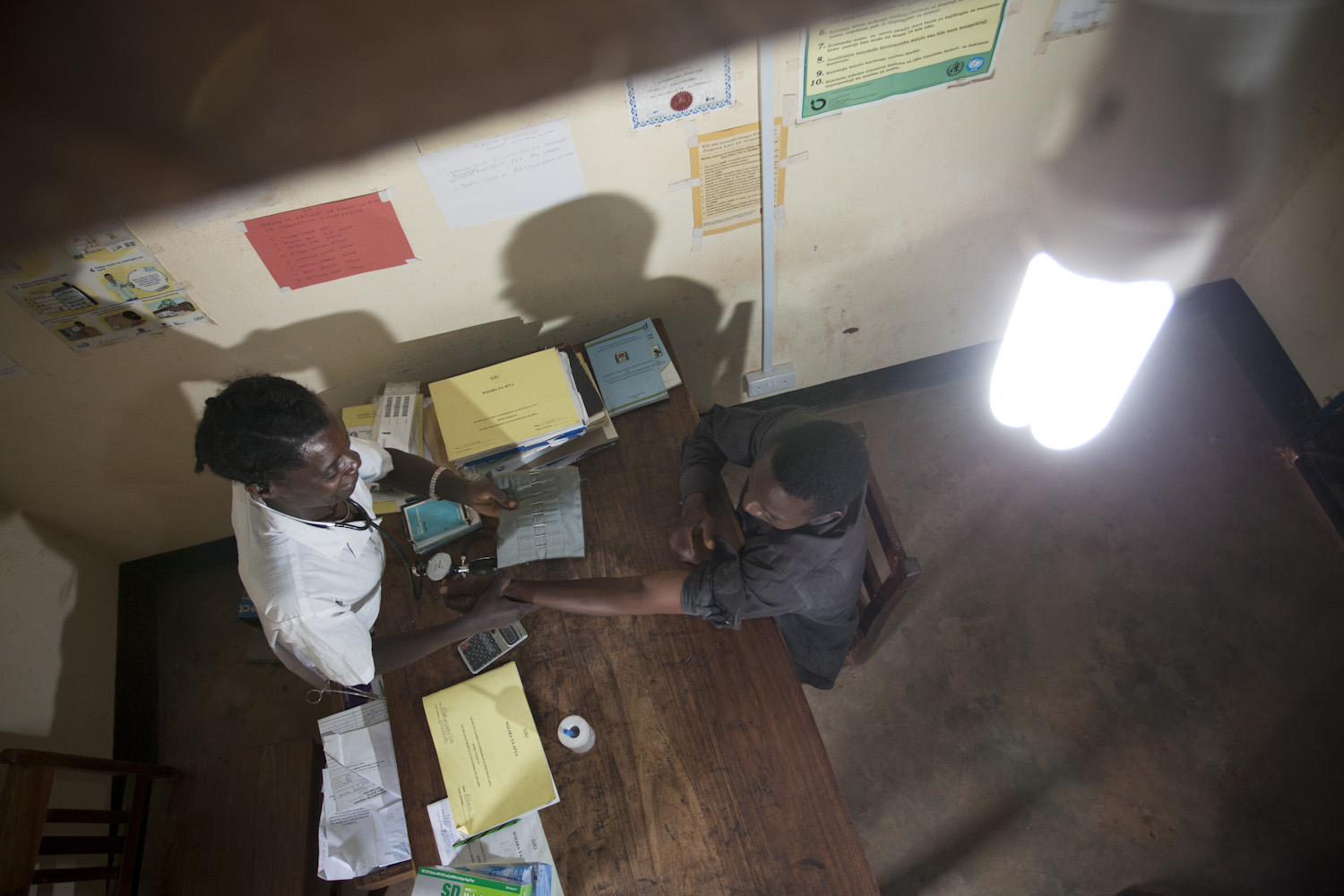
Clinic with electricity.
2020-002-2436


